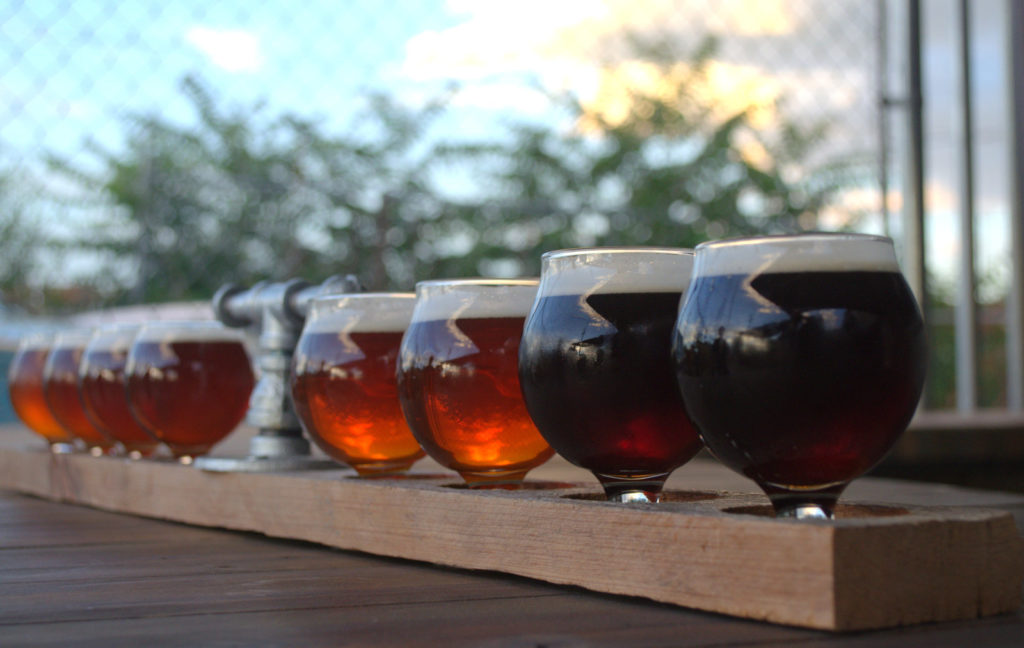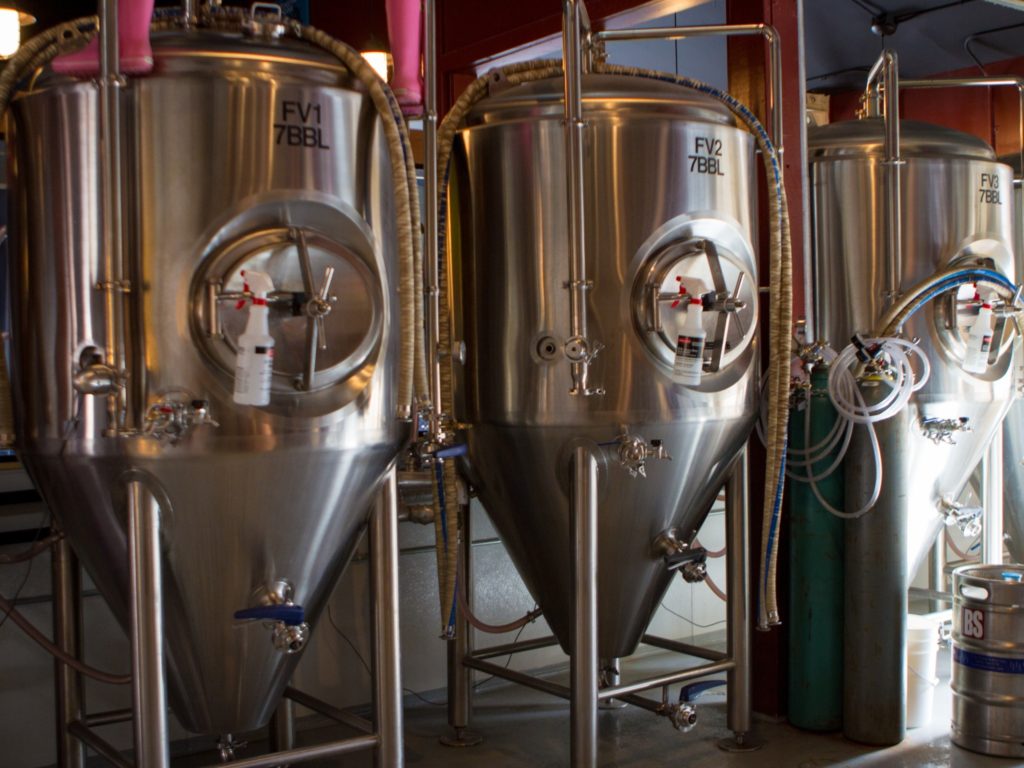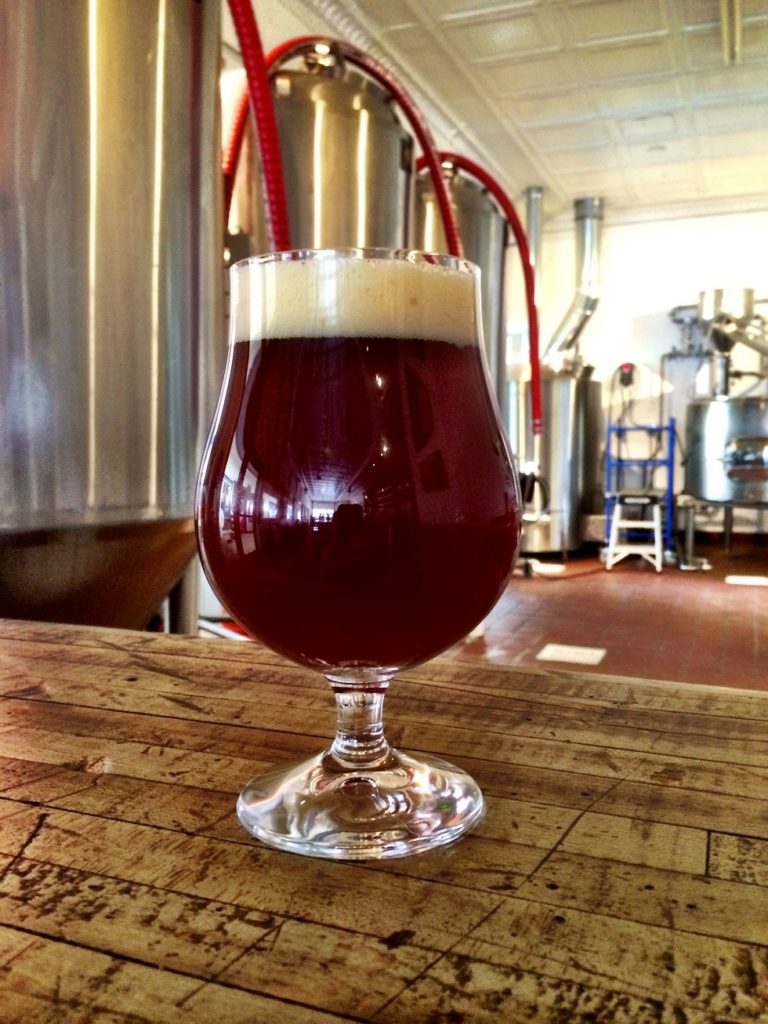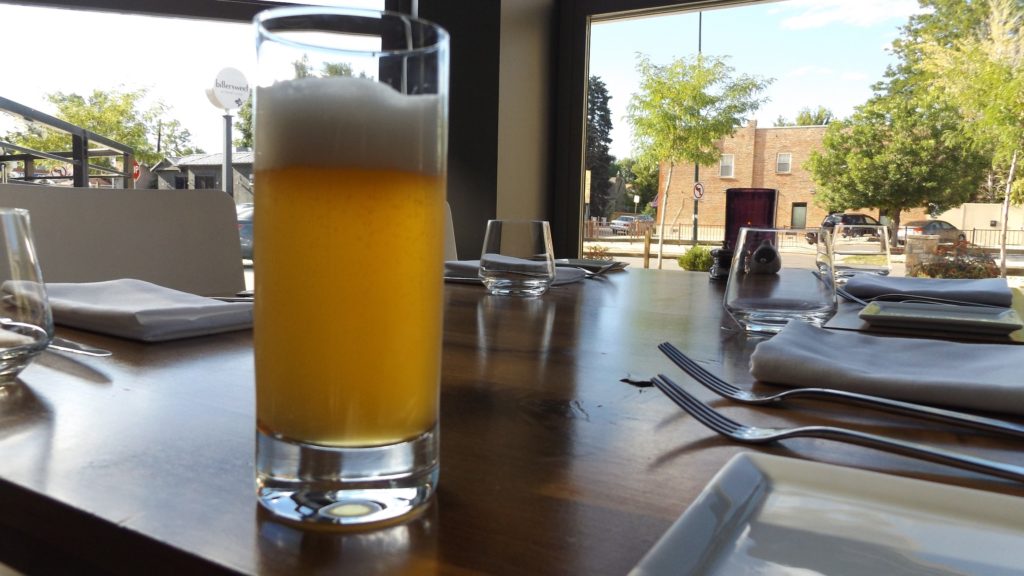By: Ryan Hodros, Culinary Arts Student
In October of 1978, Jimmy Carter signed H.R. 1337 into law, thereby making brewing beer and wine at home legal for the first time since prohibition. If you’re like I was roughly eight years ago, you’re shocked to know that brewing beer at home is even possible! I always assumed beer was one of those things you needed a factory and labs and scientists for (a myth that has been constantly broken during my time at Auguste Escoffier).
Anyway, October is roughly four weeks away, giving anyone reading this the average homebrew fermentation time to brew up a batch of homebrau to celebrate our freedom to make adult beverages at home. Yes, you can technically make wine as well, but come on, nobody reads my work for my opinions on wine (just yet).
Hardware
A lot of “seasoned” homebrewers will tell you that a ton of hardware is necessary to brew beer at home. They’ll follow this up with official terms like “wort-chiller,” “hydrometer,” and “carboy,” but it’s just not true. I’m going to tell you that what you need boils down to four basic items, three of which you probably already have at home:
1. Mash Tun
This is a fancy brewer’s term for “stock pot,” or “soup pot.” Chances are fair that you already have one, but if you don’t, don’t shell out extra money for a tun that has spigots, spouts, thermometers, or any other fancy googaws that, as a beginner homebrewer, you simply don’t need. A regular old soup kettle will work just fine. The bigger, the better, but you can work with something smaller if that’s what you have.
2. Fermenter
Again, this is a brewer’s term for any enclosed container you can store liquid in. My fermenter is a five-gallon bucket with a cover that gives an airtight seal, but if you’re not interested in buying specialty gear, you can rig a fermenter out of a used gallon wine jug and a rubber cork. Basically, you need to sterilize the inside and fit the rubber cork with a bubbler (see below for both).
3. Bubbler
This is one of the specialty items you need that you can’t really find anywhere but in a brew supply store. It’s basically a one-way valve that vents the gas produced by your yeast as it metabolizes sugar (preventing your fermenter from exploding). They’re relatively cheap, and you can find them online easily by googling “homebrew bubbler” or hitting up your local homebrew supply store.
4. Bottles
Your beer has to go somewhere when it’s ready, right? Unused 12 oz bottles will work, but then you’ll have to invest in a capper and unused bottle caps. It’s far easier to use larger bottles with EZ caps fitted on them that can be reused over and over again.
Note: It’s also handy to have funnels, tubing, and a bottle filler, but they’re notrequired to make beer at home.
Ingredients
There are really only three ingredients you need to brew what most people would consider modern beer (two if you want to make ancient beer), but I will list of several others in case you want to experiment with your homebrew.
1. Malt Extract
In either liquid or powder form, this is the fast-and-easy way to get your “wort” (unfermented beer) ready to go. You can’t get the same flavor out of malt extract that you can out of raw grains, but it’s a great base and a wonderful way to practice your brewing skills without worrying about whether a recipe will work or not.
2. Hops
In addition to giving flavor to beers, hops double as a preservative, preventing your brew from going sour on your shelves. I could write an entire book on the varieties of hops and what you can expect out of them, but the best advice I can give is to read up for yourself and experiment.
3. Specialty grains
This is where you get a lot of the different flavors that make craft beers so subtly unique, picking the correct grains for the style of beer you want is a skill unto itself. Luckily, honing this skill is a lot of fun.
4. Sugars
This is a clever way of adjusting the alcohol content of your beer, as the more sugar there is in wort, the more the yeast have to eat and the more booze they’ll produce as a result. Pro-tip: The more alcohol in your beer, the less body it will have, so you can adjust the alcohol content to dial in a mouthfeel that you really love.
5. Yeast
This is where the alcohol comes from. It can be as simple as the yeast you get in little packets at the store to make bread, or test-tubes of specialty yeasts that will give your brew specific flavors. There are tons of places online that offer yeast and information on what goes into certain strains.
6. Adjuncts
This is another brewer’s term for “anything else.” Feel like a mint beer? Toss in a bunch of mint leaves. Feel like something with a citrus zing? Throw in some lemon/lime zest. Want your beer to taste like gin? Add a good amount of juniper berries. The Reinheitsgebot makes these illegal to use in beer production in Germany, but chances are fair that you are in the States and can put whatever you like into your homebrew.
Production
Okay, so you have your recipe, your ingredients, your hardware, and a free Saturday. And for simplicity’s sake, let’s say you want to make five gallons of beer. Your brew day will start with you sterilizing all your gear by filling a sink/bathtub/bucket with water and mixing in a capful of bleach (the same kind you’d use on your whites). Don’t put it in too much or the bleach will be hard to rinse from your gear, but don’t put in too little or you could contaminate your gear. You should be able to just barely smell the bleach in your soak water. Let all your gear sit for an hour while you make yourself a sandwich and watch your favorite TV show. The most important part is to not stress—to quote Charlie Papazian, the father of American homebrewing: “Relax, don’t worry, have a homebrew.”
Once everything is sterilized, fill your mash tun about 2/3 of the way with water and put the heat to it. While it’s coming up to temp, put in your specialty grains (if any) and steep it for about a half hour. “Steeping” could mean using a thermometer and keeping the temp around 140-150 degrees, or you could just watch the liquid until it steams and keep it steaming, but not boiling, for about 40 minutes (to be safe). Skim out your grains (and use them to make bread, if you want to be environmentally friendly) and then add your malt extract and crank the heat.
Your brew will have to boil for about an hour, during which you’ll add your sugars, hops, and adjuncts. When you add them affects what kind of flavor you’ll get out of them—hops added early in the boil will add bitterness but little aroma, while those added to the end will add aroma and complexity, but not much bitterness.
Once that hour is up, you need to cool down your wort in a hurry. Easiest way is to load your fermenter up with ice and pour your wort over that. Once your wort is cool enough that you can dip your (sterilized) finger into it comfortably, pitch your yeast and seal your fermenter off. You’re done for the day. Put your fermenter someplace dark and cool and take it easy.
Roughly two weeks later, pop open your fermenter and get ready to bottle. This entails using priming sugar to charge your bottles with CO2. You could go nuts with the science of it, or you could use this handy online calculator, which tells you how much sugar to add without exploding your bottles. Fill your bottles with your primed young beer, seal off the bottles, and relax, because you’re pretty much done with work. Wait two weeks, and enjoy!
Obviously, there’s a lot more science to brewing than what I’ve outlined here, but this is a primer for people who want to make beer at home for fun. If you’re looking to enter homebrewing competitions or open your own brewery, I won’t be able to help you there. But this is a great way to get your foot in the door of homebrew culture, which is fun, laid-back, and a great way to get into and understand one of the best-selling beverages of all time!







